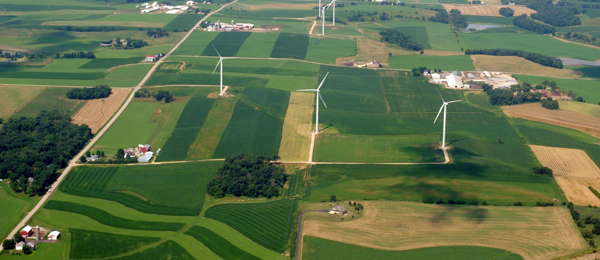news
![]()
July 1, 2013
Tradeoffs and win-wins in ecosystem services

 When it comes to maintaining the many benefits, or ecosystem services, that nature provides for us, there are both tradeoffs and win-win situations.
When it comes to maintaining the many benefits, or ecosystem services, that nature provides for us, there are both tradeoffs and win-win situations.
This was a main point in WSC’s first publication, which came out in the July 2013 volume of Proceedings of the National Academy of Sciences (PNAS). WSC PI Monica Turner and graduate student Jiangxiao Qiu used a novel approach to analyze 10 different ecosystem services across a landscape, uncovering ways to understand where the synergies and tradeoffs lie.
Turner and Qiu mapped the production, distribution and interactions of three types of ecosystem services in the Yahara Watershed: provisioning (e.g., food and fresh water), cultural (e.g., aesthetics and recreation) and regulating (e.g., erosion prevention and carbon storage). They found that most “services” are not independent of each other, but interact in complex ways.
The interactions were both expected and unexpected. For example, as expected, higher crop production was associated with poorer water quality; and flood regulation, pasture and freshwater supply coincided.
Unexpectedly, some places where crop production was high also exhibited generally good water quality.
Turner and Qiu also found that ecosystem services are not uniformly distributed across the watershed’s landscape, but there are a few “hotspots,” where high levels of at least six of the measured services are provided.
Their research highlights the importance of managing land holistically. It also provides a present-day picture of the spatial distribution of ecosystem services, which can serve as a point of comparison for WSC’s investigation of the future prospects of ecosystem services in the watershed.
Media Coverage
Ecologists map the benefits of our ecosystems
UW-MADISON NEWS | July 1, 2013
Mapping the benefits of our ecosystems
SCIENCE DAILY | July 1, 2013


